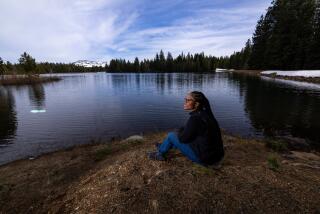CAL STATE NORTHRIDGE : Professor’s Research Aids Park
- Share via
A national park that aims to preserve the history of Natchez, Miss., between 1789 and 1877 is being developed with the help of research by Cal State Northridge history Prof. Ronald Davis.
Davis received a $20,000 grant from the U.S. Department of the Interior to do a special study for the Natchez National Historical Park, being created by the National Park Service in Mississippi.
The Natchez area is the site of the nation’s largest population of original cotton plantations.
“Natchez was the heart of the oldest and richest plantation district of the antebellum South,” Davis said.
“Many of these homes are the finest collection of antebellum architecture in the nation.”
The professor’s research will emphasize the early experiences of blacks and their contributions to the nation’s heritage.
“The purpose of the study is to provide the essential historical context that will be used to guide the development and interpretation of the park,” Davis said.
He said the population of Natchez before the Civil War included thousands of slaves as well as free blacks, some of whom owned plantations.
“Free blacks and slaves in the Natchez district compose one of the most complex and intricate experiences known to historians,” Davis said.
The home of William Johnson, a slave who was freed before the Civil War, will be restored and featured in the park.
The current focal point of the historical park and the only facility open to the public is the Melrose Mansion, a Greek Revival-style home built in 1845 as the suburban estate of John T. McMurran, a wealthy attorney and planter.
McMurran’s 78-acre estate, which contains original furnishings, will be developed along the lines of Virginia’s Colonial Williamsburg, Davis said.
It includes the 14,472-square-foot main house, 12 outbuildings and about 40 acres of a wooded park landscaped with ponds, formal gardens and orchards.
More to Read
Sign up for Essential California
The most important California stories and recommendations in your inbox every morning.
You may occasionally receive promotional content from the Los Angeles Times.













